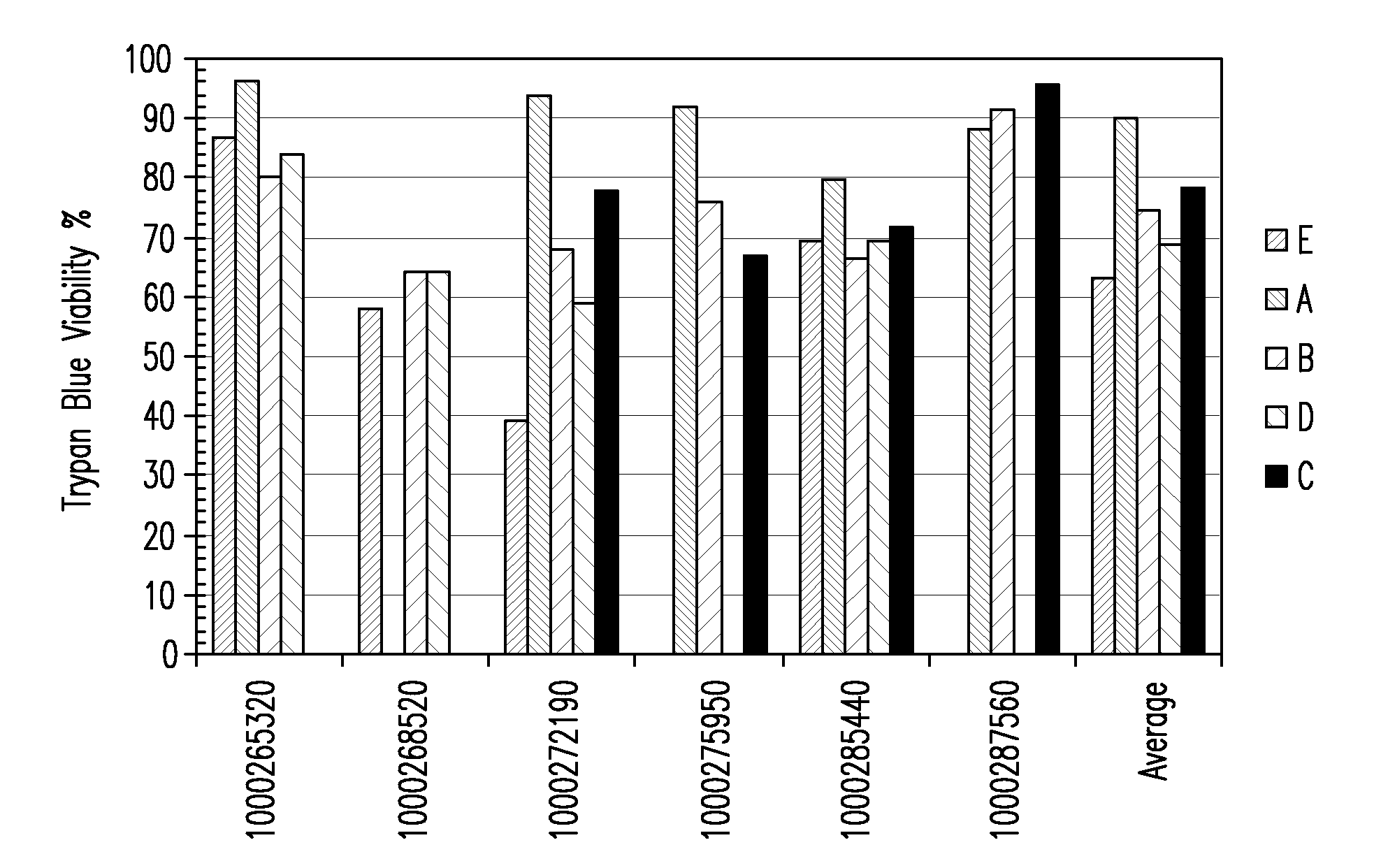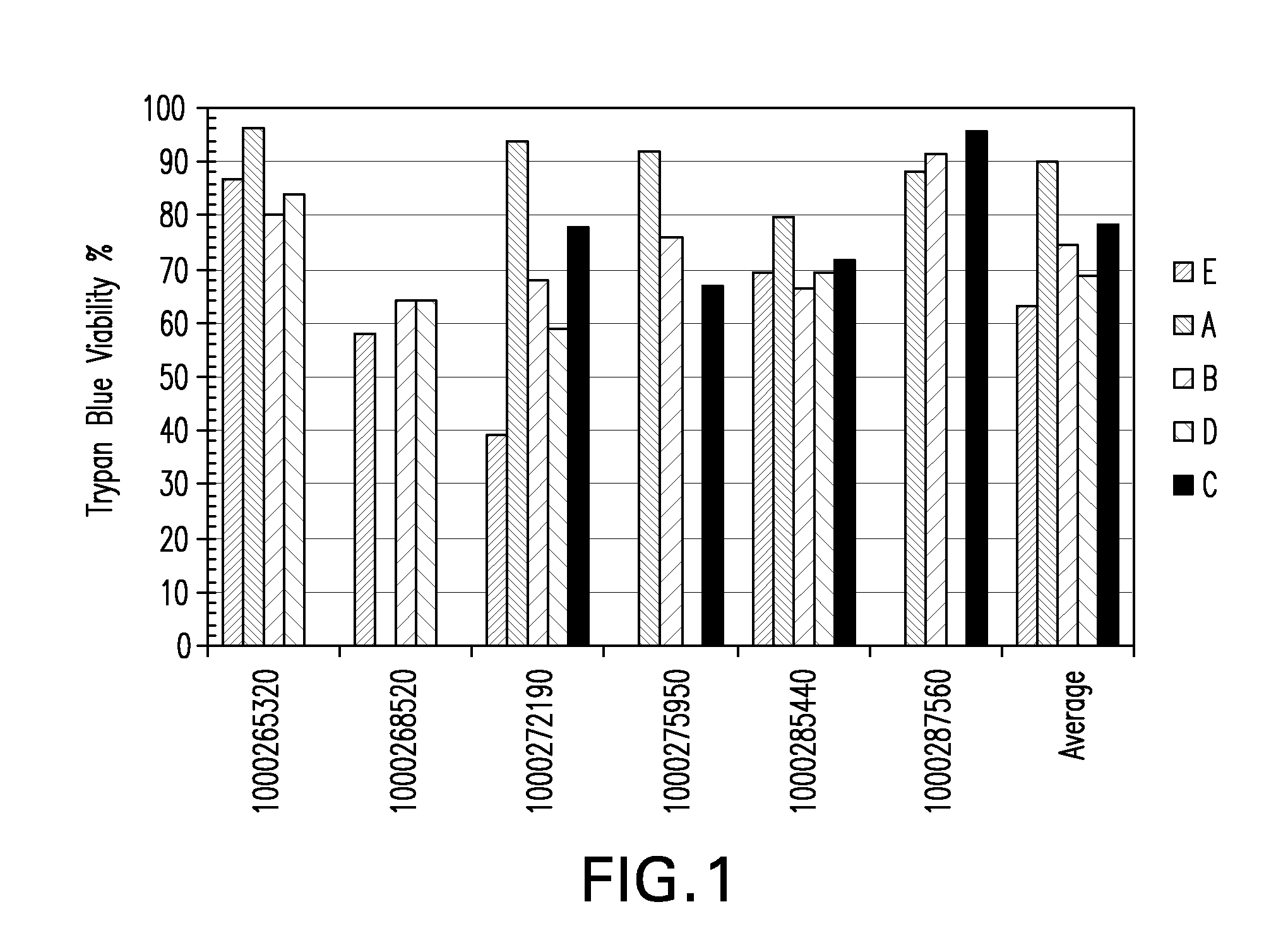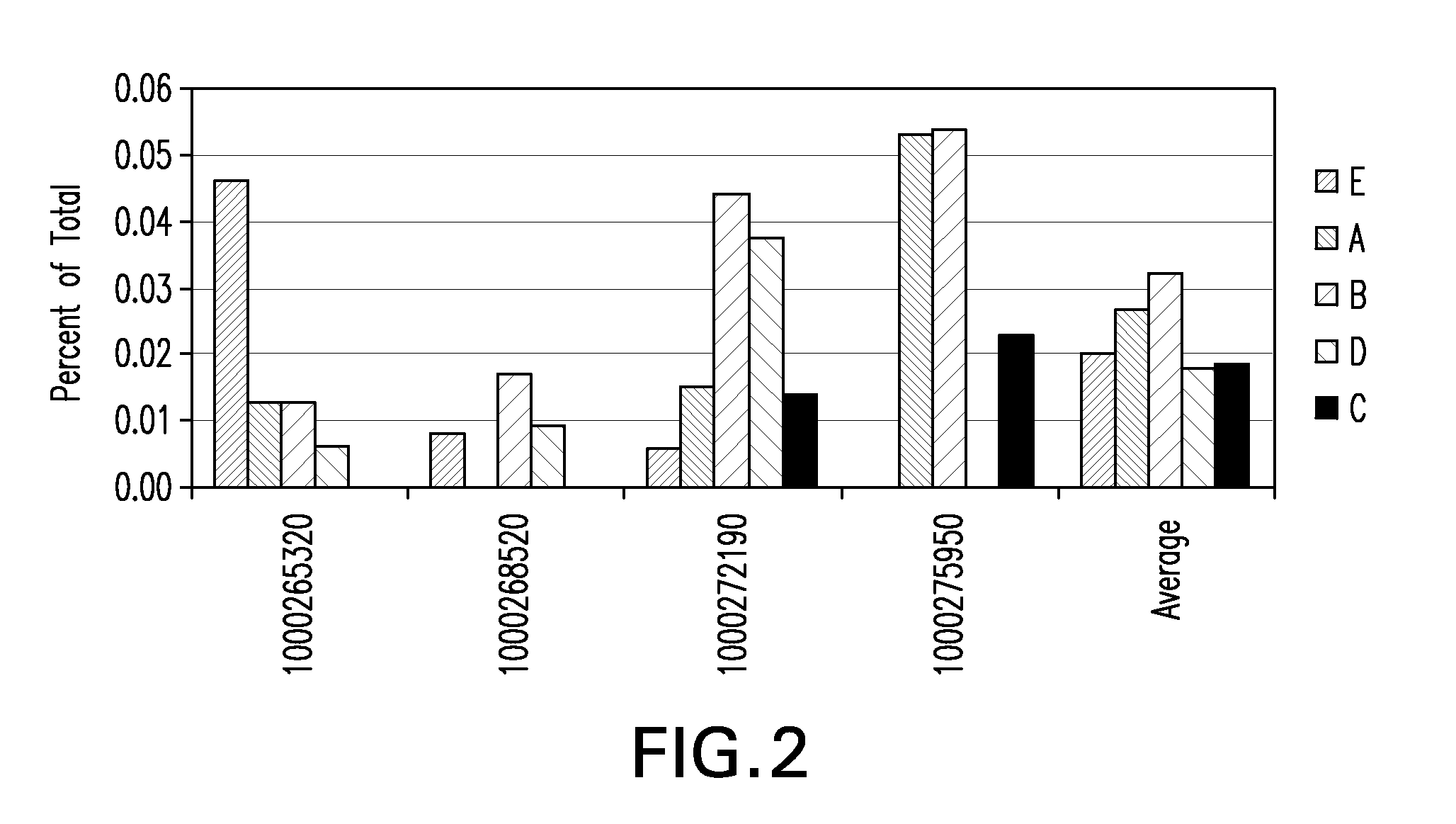Tumor suppression using placental stem cells
a placental stem cell and tumor technology, applied in the field of placental stem cells, can solve the problems of not being able to describe the ability of placenta-derived stem cells to suppress tumor growth or tumor cell proliferation, and achieve the effects of facilitating the formation and facilitating the development of one or more embryoid-like bodies
- Summary
- Abstract
- Description
- Claims
- Application Information
AI Technical Summary
Benefits of technology
Problems solved by technology
Method used
Image
Examples
example 1
6.1 Example 1
Culture of Placental Stem Cells
[0230]Placental stem cells are obtained from a post-partum mammalian placenta either by perfusion or by physical disruption, e.g., enzymatic digestion. The cells are cultured in a culture medium comprising 60% DMEM-LG (Gibco), 40% MCDB-201(Sigma), 2% fetal calf serum (FCS) (Hyclone Laboratories), 1× insulin-transferrin-selenium (ITS), 1× lenolenic-acid-bovine-serum-albumin (LA-BSA), 10−9 M dexamethasone (Sigma), 10−4M ascorbic acid 2-phosphate (Sigma), epidermal growth factor (EGF) 10 ng / ml (R&D Systems), platelet derived-growth factor (PDGF-BB) 10 ng / ml (R&D Systems), and 100 U penicillin / 1000 U streptomycin.
[0231]The culture flask in which the cells are cultured is prepared as follows. T75 flasks are coated with fibronectin (FN), by adding 5 ml PBS containing 5 ng / ml human FN (Sigma F0895) to the flask. The flasks with FN solution are left at 37° C. for 30 min. The FN solution is then removed prior to cell culture. There is no need to dr...
example 2
6.2 Example 2
Isolation of Stem Cells from Placental Structures
[0241]6.2.1 Materials & Methods
[0242]6.2.1.1 Isolation of the Phenotype of Interest
[0243]Five distinct populations of placental cells were obtained from the placentas of normal, full-term pregnancies. All donors provided full written consent for the use of their placentas for research purposes. Five populations of placental cells were examined: (1) placental perfusate (from perfusion of the placental vasculature); and enzymatic digestions of (2) amnion, (3) chorion, (4) amnion-chorion plate; and (5) umbilical cord. The various placental tissues were cleaned in sterile PBS (Gibco-Invitrogen Corporation, Carlsbad, Calif.) and placed on separate sterile Petri dishes. The various tissues were minced using a sterile surgical scalpel and placed into 50 mL Falcon conical tubes. The minced tissues were digested with 1× Collagenase (Sigma-Aldrich, St. Louis, Mo.) for 20 minutes in a 37° C. water bath, centrifuged, and then digeste...
example 3
6.3 Example 3
Differentiation of Placental Stem Cells
[0280]Adherent placental stem cells were differentiated into several different cell lineages. Adherent placental stem cells were isolated from the placenta by physical disruption of tissue from anatomical sites within the placenta, including the amniotic membrane, chorion, placental cotyledons, or any combination thereof, and umbilical cord stem cells were obtained by physical disruption of umbilical cord tissue.
[0281]Placental stem cells and umbilical cord stem cells were established in a medium containing low concentrations of fetal calf serum and limited growth factors. Flow cytometry analysis showed that placental stem cells typically exhibited a CD200+CD105+CD73+CD34−CD45− phenotype at percentages of ÿ %. Placental stem cells were found to differentiate down the adipocyte, chondrocyte and osteocyte lineages.
[0282]In an induction medium containing IBMX, insulin, dexamethasone and indomethacin, placental stem cells turned into f...
PUM
| Property | Measurement | Unit |
|---|---|---|
| molecular weight | aaaaa | aaaaa |
| temperature | aaaaa | aaaaa |
| temperature | aaaaa | aaaaa |
Abstract
Description
Claims
Application Information
 Login to View More
Login to View More - R&D
- Intellectual Property
- Life Sciences
- Materials
- Tech Scout
- Unparalleled Data Quality
- Higher Quality Content
- 60% Fewer Hallucinations
Browse by: Latest US Patents, China's latest patents, Technical Efficacy Thesaurus, Application Domain, Technology Topic, Popular Technical Reports.
© 2025 PatSnap. All rights reserved.Legal|Privacy policy|Modern Slavery Act Transparency Statement|Sitemap|About US| Contact US: help@patsnap.com



